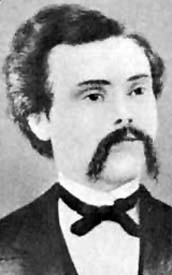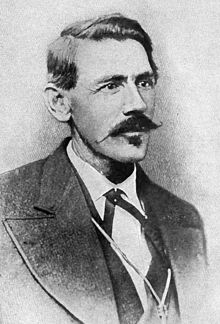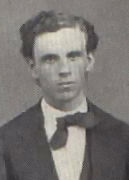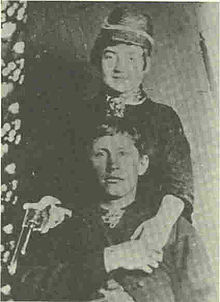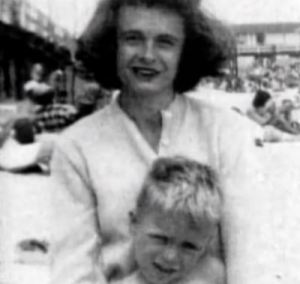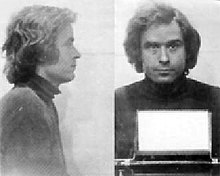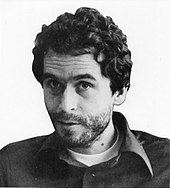Leavenworth From The Southwest

Barnes/Kelly
The exception to the stereotypes of the robbers and killers he will end up behind bars with, Barnes is born into a well-to-do Memphis family on July 18, 1900. Though only an average student, there is nonetheless an emptiness of criminal acts in his childhood, and he attends school, going to high school (he drops out before graduating), and starts college (based on passing a entrance test), studying agriculture, at Mississippi State University in 1917 ... an affable young man, six feet tall in stature, that everyone that comes in contact with, seems to like. It is at Mississippi State though where his life comes unglued. At 19, he meets and sires two children with Geneva Ramsey (the daughter of a wealthy businessman with connections to the Mississippi governor) ... and with mouths to feed, he gets a job as a cab driver, but when that doesn't provide the funds he finds necessary for sustaining his new family, he begins to dabble in crime ... starting as a bootlegger, and to protect his parents, siblings, and his own wife and children, going by the new moniker of George Kelly. Making good cash, it is a good occupation for Kelly until he sells a stash of hooch on an Indian reservation. A Federal offense, he is arrested, tried, and sent away for three years, where he begins being schooled in real criminality by three of the biggest hoodlums in the country ... Francis Keating, Thomas Holden, and Frank "Jelly" Nash.
Holden & Keating
Nash
Partners that sell their armed robbery services to various Midwest criminal gangs, Keating is from a middle-class Irish-American clan, the youngest member of a family of eight (his father will die of tuberculosis when he is just seven), and before becoming a crook, a Chicago cab driver and streetcar conductor, a Navy veteran, and a husband with two young sons, while Holden, the bigger of the men by two inches and twenty pounds, is a former Stutz auto salesman and steam fitter. They are in Leavenworth, serving 25-year sentences each for the 1926 robbery of a Port Huron and Chicago Railway train in Evergreen Park, Illinois ... a little job that nets the men $130,000.
Evergreen Park
Nash, by 1930, known as "the most successful bank robber in U.S. history" (he is thought to have robbed roughly 200 banks) comes from a family (the future outlaw has two sisters and two step-brothers) that will start hotels in several southern towns. From 1904 to 1907, he keeps his nose clean, serving in the United States Army, but then goes wrong ... he is convicted of his first crime in 1913 at the age of 26. In for a penny, in for a pound, in the years that follow his conviction, Nash (the "Jelly" nickname comes from being called "Jellybean" as a youth) will murder Nollie "Humpy" Wortman over $1,000 the men have stolen, convince a warden to let him out of prison to fight in WWI, take part in the WWI Battle of Belleau Wood in 1918, get sent to Oklahoma State Penitentiary for 25 years on safe cracking charges (becoming a trustee, he gets out in five), joins the Al Spencer Gang in 1922 (a former member of the outlaws that followed Henry Starr until that bandit's death in 1921, Spencer will be gunned down himself when he gets into a shootout with the police in September of 1923), participates in the last Oklahoma train robbery in 1923, and in 1924, after returning to the States after hiding out in Juarez, Mexico, is arrested and sent away on another 25 year sentence for mail robbery and assault on a mail custodian ... Federal offenses that get him sent off to the government's prison in Leavenworth, Kansas.
Spencer
Hard cases all, the men do not plan on staying behind bars for the 25 years to which they've all been sentenced, and with the arrival of Kelly, they see a way of leaving. Considered a minor league crook and not a flight risk whatsoever, Kelly is assigned to work in the Leavenworth records room where he has access to photos and fingerprints of every prison, and there, with the help of Nash and a convict named Charlie Harmon (serving time for a post office robbery that nets the outlaw a measly $174), forges trustee passes for Keating and Holden on the understanding that when he gets out, Kelly will be allowed to join the Holden-Keating crew in their next bank robberies. Agreed, on the last Friday in February, with passes ready, Keating and Holden join a work party leaving the prison, and once outside, simply walk away, heading north for their criminal contacts in Chicago and St. Paul. Two years later, the rest of the group will be out of Leavenworth too ... Kelly serves his sentence and is released in 1932 (authorities never connect him to the 1930 escape), Harmon is paroled in 1930, and also later in 1930, foolishly made the warden's chef and general handyman, Nash leaves the prison on an errand for his head keeper, and never comes back.
Leavenworth
True to their words, after Kelly hooks up with Keating and Holden at the St. Paul's criminal frat house, underworld boss Harry Sawyer's Green Lantern Inn, the rookie gunman is included in the robbery of the Wilmer, Minnesota bank ... a heist that along with Holden and Keating, includes master thief Harvey Bailey and killer Verne Miller, nets the group $142,000 in cash and securities, but becomes a blood bath when the residents open up on the gang (a cashier is pistol whipped for moving too slowly, two women in a crowd of 100 people are wounded when the gang blasts a machine gun their way, two outlaws are wounded, and the gang leaves town with all the windows in their escape vehicle bullet blown out). A bloody mess, it is but a foretaste of the fates that will befall each of the former Leavenworth convicts.
Sawyer
Miller
Bailey
Seeking a less violent means of pointing cash in his wallet, and egged on by his wife Kathryn, along with partner Albert Bates, after several other bank robberies, Kelly in 1933 kidnaps Charles Urschel from the oilman's Oklahoma City house, and ransoms him for $200,000 ... a change in activity that gets the FBI on Kelly's tail. Arrested in Memphis (the outlaw will state that he never made the famous arrest utterance he is credited with ... "Don't shoot G-men! Don't shoot!"), Kelly will receive a life sentence for the crime, spends 17 years on Alcatraz as prisoner #117, and dies of a heart attack back in Leavenworth Penitentiary on his 59th birthday in 1954 (Bates will die on Alcatraz in 1948 at the age of 54, Kelly's wife Kathryn, is released from behind bars in 1958 and dies in 1985).

Machine Gun Kelly
Holden and Keating participate in several more bank jobs, working with Bailey again (during a 1931 robbery of Menomonie, Wisconsin's bank, Charlie Harmon is fatally wounded ... his widow, Paula, will become manic Freddie Barker's new girlfriend shortly afterwards), but not adjusting their life styles when they should be hiding, are caught weaponless, along with Harvey Bailey, by the FBI and a squad of police while golfing the 8th hole at the Mission Hills Country Club in Kansas City, Missouri in 1932. Back to Leavenworth, they are then transferred to the new Federal super-prison when Alcatraz opens in 1934. Eventually both men make it back to Leavenworth and are set free ... Holden and Keating both are paroled in the 1940s and finally break away from each other. Keating becomes a respected florist, a St. Paul union organizer, a husband once more, and a grandfather before passing away from heart disease at the age of 79 in 1978. Holden however reverts to his old ways, and drunk and upset after a family argument in 1949 in Chicago, shoots to death his wife and her two brothers and is made the first entry on the FBI's new Top 10 Most Wanted List of fugitives. Caught in 1951 using the alias of John McCullough and working as a plasterer in Beaverton, Oregon, Holden is returned to prison for a life sentence that lasts all of two years, dying behind bars at the age of 58.
Wanted Poster Photo Of Holden
The bloodiest goodbye though goes to Nash. After participating in a number of robberies with Bailey, Keating and Holden, and an assorte group of members of the Barker-Karpis Gang, Nash decides he wants no part of the 1933 Barker-Karpis kidnapping of Minnesota brewer William Hamm, and with his wife Francis, takes a vacation in the criminal haven of Hot Springs, Arkansas, is arrested in the White Front Cigar Store by FBI agents and Police Chief Orrin "Otto" Reed of McAlester, Oklahoma. Headed for a return to Leavenworth, Nash is instead killed along with four lawmen in what will be known as the Kansas City Massacre when friends try to free him in the train station parking lot ... the event that allows J. Edgar Hoover to expand and arm what will become today's FBI (it is now believed that Nash is actually killed by an FBI agent who mishandles his shotgun trying to bring it to bear on the outlaws trying to free Nash, and instead blows off the top of the bank robber's head).
Massacre





